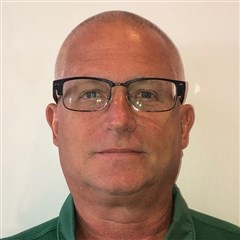Pressure Pots Vs. Pumps
Several factors will influence your choice of pressure pots vs. a pumping system as the right supply solution. Allan Mustard, strategic accounts manager, Carlisle Fluid Technologies, walks you through what you need to know.
Q: My finishing process uses high volume low pressure (HVLP) guns supplied from pressure pots. With the current increased demand, I am being told to use a pumping system for increased productivity. I am looking for guidance to understand which is better, pressure pot or pump and if I were to use a pump, what type?
First, let’s define what a pressure pot is. A pressure pot is a sealed container that uses air pressure to push the fluid inside out to another area or an applicator as a supply solution. Pressure pots come in scalable sizes from one quart to 20 gallons volume. They are available with top or bottom outlets and can also be configured with agitators to keep the material in suspension.
Several factors will influence your choice of pressure pots as the optimal supply solution. They might include:
- Easy to use and maintain, with very few wear parts.
- Some fluids are affected by exposure to air, and the sealed container protects the material from solvent evaporation or changes in chemical properties as a result.
- Very durable, as long as you keep them clean.
- Fluid pressure is relatively low and very stable for consistent flow rates.
- Pressure pots are very portable and easily relocatable to anywhere compressed air is available.
Pumps are a motor that will push material from a source to one or many locations at various flow rates and pressures. Powered by air, hydraulics, or electricity, the most common pump for industrial applications and electric for contractors is an air-powered pump.
Below are key factors that make pumps optimal supply solutions:
- Pumps are more scalable for supply, pressure, and flow rate capabilities.
- Perhaps the need is for high volumes of material, and the supply has to match the pace of usage. Large tanks are available and can be filled during use with no interruptions.
- Many applications involve liquids with higher viscosities, and optimal solutions require medium and high fluid pressures. Pumps are available in different compression ratios to manage those higher fluid pressures.
- Pumps are sized relative to pressure for use with low, medium, or high-pressure applicators (conventional, Air-Assisted-Airless, Airless) and can speed up process time.
- Pumps are designed to change materials and colors easily with little wasted material and quick flushing. Many processes require frequent material changes, and pumps are available to suit that need.
- Pumps are also available to recirculate materials that typically settle or change if not in constant motion or flow, even when the material is not in use. Central supply pump “kitchens” are used to provide this solution. The pump is scaled for the recirculation rate of a particular viscosity through a specific tubing diameter; this will also accelerate flow when there is a demand in the supply circuit. When demand ceases, the pump will decelerate accordingly, automatically.
Both pressure pots and pumps are optimal solutions for specific applications, defined by:
- Number of applicators or spray stations to supply
- The usage rate of the material
- The viscosity of the material
- Fluid pressures required for the specific applications
- Frequency of material/color changes
- Consistent, balanced supply to more than one location, and if so,
- Recirculation requirements for material integrity
In conclusion, both solutions can be optimal when aligned with the conditions and fluid properties involved. Both are scalable and versatile in many ways. In many processes, testing on a lower scale may involve pressure pots, then scale up for production using pumps. In many cases, the simplicity and reliability of a pressure pot may be all that is needed. If there is a 2k material with a pot life, the pump is not optimal. Reach out to your coating suppliers for product data sheets and review them with a regional equipment distributor who will help you define your solution.
About the Author

Allan Mustard
Allan is a strategic accounts manager for Carlisle Fluid Technologies. Visit carlisleft.com.
Related Content
Surface Prep Solution for Rusted Rebar in Concrete
Julie Holmquist of Cortec Corporation discusses passivating corrosion on rebar and other reinforcing metals.
Read MoreCuring Oven Basics
Simply heating up the substrate does not cure the coating. There are many variables to consider when choosing the best cure oven for your application...
Read MoreFinishing Systems Provider Celebrates 150 Years, Looks to Future
From humble beginnings as an Indiana-based tin shop, Koch Finishing Systems has evolved into one of the most trusted finishing equipment providers in the industry.
Read MoreZinc Phosphate: Questions and Answers
Our experts share specific questions about zinc phosphate and pretreatment
Read MoreRead Next
Episode 45: An Interview with Chandler Mancuso, MacDermid Envio Solutions
Chandler Mancuso, technical director with MacDermid Envio discusses updating your wastewater treatment system and implementing materials recycling solutions to increase efficiencies, control costs and reduce environmental impact.
Read MoreDelivering Increased Benefits to Greenhouse Films
Baystar's Borstar technology is helping customers deliver better, more reliable production methods to greenhouse agriculture.
Read MoreA ‘Clean’ Agenda Offers Unique Presentations in Chicago
The 2024 Parts Cleaning Conference, co-located with the International Manufacturing Technology Show, includes presentations by several speakers who are new to the conference and topics that have not been covered in past editions of this event.
Read More





















